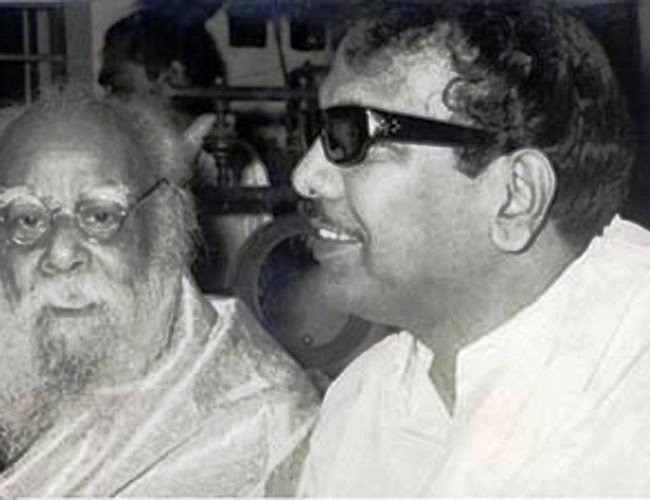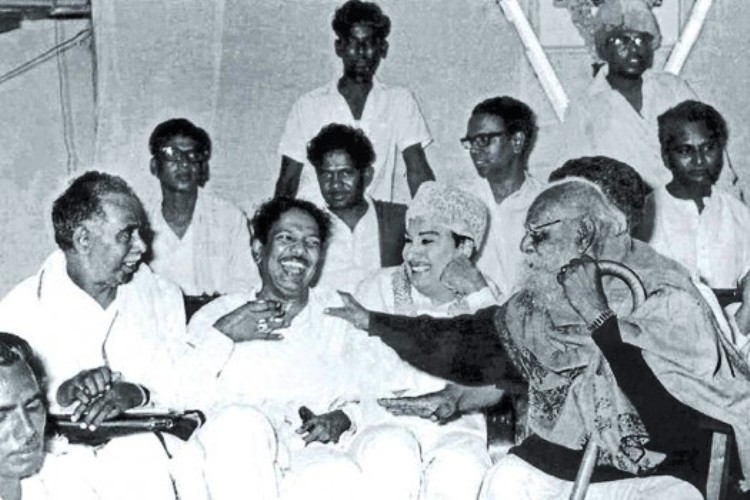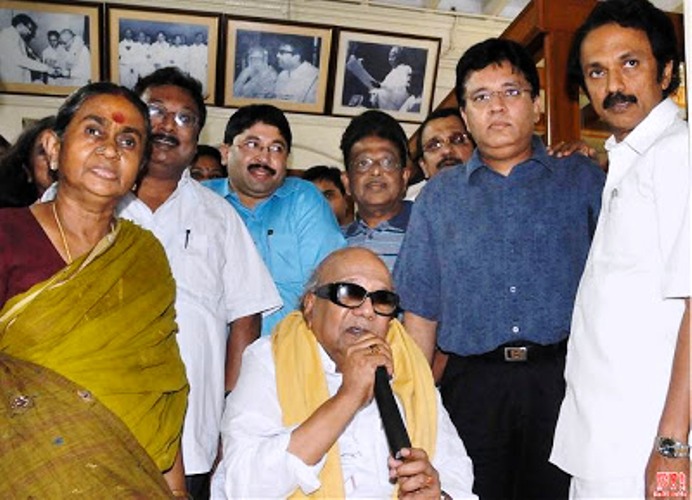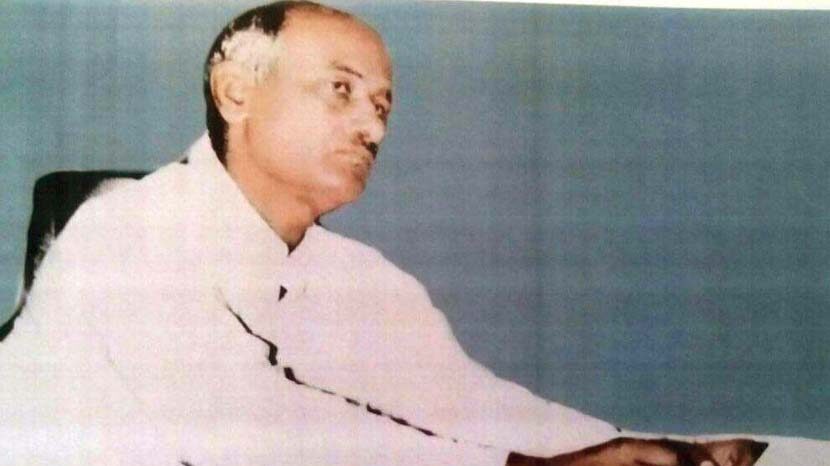Periyar’s radicalism comprises several parts – his critique of Brahmanism had many sides to it. At one level, it was a rejection of the brahmanical abhorrence of labour and touch. Describing the differences he harboured with C. Rajagopalachari (Rajaji), who was also a good friend of his, he remarked that Rajaji stayed true to his mission, which was that “he did not want his caste men to have to pick up a spade and labour”. In another instance, speaking of the winning flexibility of Brahmin intellectualism, he observed that some Brahmins might abhor a “Panchama” entering their homes, whereas others might not be averse to the same “Panchama” entering their kitchens; some might even “allow” a Panchama to enter the sanctum sanctorum of their altar room, and there were Brahmins who married Panchamas. In all this, though Brahmins made choices that worked to their advantage – he used the Tamil word “balithavarai”, that is whatever “worked” for them. At another level, Periyar argued that Brahmanism had to do with the hierarchical logic of varnadharma, which, like a ladder implicates everyone – in this sense, each of us carries a ladder in our consciousness, and we measure ourselves and others on the basis of where we are placed on this ladder. However, what drew the attention of the people at large was his critique of the Brahmin community’s proneness to separate and “upgrade” themselves whenever they were challenged; and the hegemonic role they exercised in matters of everyday religiosity, culture, and, in the modern period, in arbitrating social values. Brahmin religious authority was also scorned – and Hindu religious lore was subjected to merciless criticism.
Periyar also argued that “Dravidian” faith and rituals were as “soiled” by brahmanical exegesis and arguments, and dismissed, on this basis the Tamil Saivites’ claim to a faith (Saiva Siddhantha) which, they argued, was different from brahmanical Hinduism; he was equally dismissive of local practices of ritual, of village cults and so on. Yet, given that the political force of his critique of Brahmanism addressed Brahmanical Hinduism, the “Dravidian” practitioners of Saivism, as well as those who were bound by local lore and faith, could detach Periyar’s animosity towards religion in general from his anti-Brahmin critique, and uphold the latter, while ignoring the former. This was not of course true of his more consistent followers, including women. This is important to note, because atheism as household practice was common among those in the organizations he founded – and there were several intrepid women, who were proud to declare themselves atheists and insisted on secular burial rituals for themselves.
All this made for a public culture, where Periyar’s radical rejection and critique of faith – breaking of the Ganesha idol, slippering (stamping or smacking with slipper, shoe or chappal) portraits of the god Rama in public – enjoyed visibility and support; yet his more fundamental critique of faith, and the angry denunciation of caste that was implicit in his denunciation of Brahmanical Hinduism were not always taken in and internalized.
Also, historically, religious rituals, including temple festivals, and the granting of “honours” to local heads of communities during such events have served the purpose of affirming social status and rank in the Tamil context. This is as true of local temples as it is of the gigantic royal and brahmanical edifices that mark the Tamil landscape. So, in a sense, social personhood is bound with temple ritual – with religious and secular authority being nested in each other. This is why Dalits see it fit to challenge the prerogative that dominant castes arrogate to themselves during such festivals, and demand places and roles for themselves in the conduct of the latter.
Further, even those temple spaces that had been outside the sacred spaces dominated by Brahmanical Hinduism have, over the last few decades, been “upgraded” and have begun practising brahmanical temple rituals – which of course require a Brahmin priest. Worshippers at such temples that have been so “upgraded” are mostly from the so-called Shudra groups, those we would designate as backward and most backward castes if we were to resort to state terminology. On the other hand, as we saw when the courts banned animal sacrifices in temples outside the purview of brahmanical control, there were widespread protests – and the local was upheld in the face of the “supralocal” brahmanical view of faith. What was forgotten in this debate was that the local did not always mean that it was inclusive of Dalits – and that while Dalits too may be invested in the local, it was always “their” local. That is, they were not part of a putative and trans-caste local culture.
Here, it must be noted that in the 1940s and after, particularly in northern Tamil Nadu, when Dalits were drawn to the Scheduled Caste Federation, and to Buddhism, they (some of them) gave up such practices of the local – they refused to be part of temple rituals in some cases, gave up animal sacrifices in others, and took to Buddhism. But Tamil Nadu has yet to witness large-scale conversion to Buddhism as occurred in Maharashtra.
So, if we are to view Periyar’s life and work in the context of the longue durée (long duration) of history, and of the complex relationship between Brahmanical Hinduism and local and regional practices of faith, we are likely to end up with a more sober view of his influence – he interrupted, powerfully and with intellectual and social verve, a longer history of religiosity, but that does not mean that this history was stood on its head. Its logic persists to this day. Also, we know, from the histories of other nations that disavowed faith, that it was State power that dislodged the institutional authority, material power and resources of religions – and not rational persuasion or consistent civil opposition. This is as true of Napoleonic France, as it was of the Soviet Union.
On fiefdoms, corruption and Hindutva
Periyar would have raged against these practices – for one, he was suspicious of political power as such and many a time noted that power can and does corrupt, not merely in the material sense but also by compromising one’s social vision. He also noted that staying out of the precincts of power granted him a certain latitudinarian freedom, to criticize social and faith-based practices. Secondly, while he was a pragmatist and did envisage a role for the State in bringing about laws that would enable social change, such pragmatism did not ever stop him from continuing to criticize social and religious practices. That is, the demands he made of the State and of governance did not mean that these automatically fell in with those in power – and this is evident in his support for the Congress government in Tamil Nadu under the headship of the late K. Kamaraj.
As we all know, political pragmatism can be principled or not – Babasaheb Ambedkar’s position in this context is the most complex, and ethically mindful. At the same time, we have seen left and Dalit political groups, who are ideologically fierce, adopting a pragmatism that was not always as mindful – the CPI’s stance during the Emergency, the CPI’s and CPM’s support in the past of corrupt and anti-people governments and parties in Tamil Nadu, and Mayawati’s support for Modi during the Gujarat post-carnage-2002 elections. Clearly, pragmatism is viewed as “alright” in the long run, while embarrassing and problematic in the short run – but this was not a position Periyar or Babasaheb Ambedkar would have accepted. Further, even when he supported governments that appeared to him to be receptive to social justice ideals, Periyar did not ever allow such support to interfere with his critical work in the civil and public realms.
Probity in public life was an important value for Periyar – and he always wrote scornfully of how much those in power earn, or benefit in a material sense. Yet he was not unmindful of what money could do, and kept a tight rein on his own organization’s financial resources, and did not plot a role for kin in managing the latter.
On capitalism
Periyar did not develop consistently argued views on the economy, but he was clear-eyed about capitalism and its relentless march towards amassing wealth, irrespective of how that affects the larger common good. His insistent characterization of the modern Indian nation-state as “Brahmin-Bania” was not only on account of its cultural-social core but also because he saw the state as subserving capitalist interests. He viewed the State as being a truly republican institution, with the people being sovereign in every sense – and the State in this capacity had a role to play, arbitrating the greater common good, and devising laws and plans that would ensure the realization of such a good. This is why he insisted that the State be responsive to the claims to power and representation of different sections of the population and upheld the importance of reservation – for otherwise, how may a State be considered a people’s State, or one that was sovereign?
In another sense too, Periyar was critical of capitalism – private property he argued was central to the making of social and conjugal relations, for it was only because one wished to pass on property (or resources, as the case may be) in a generational sense that marriage was deemed a necessity, and in the Indian context, this also meant that one passed on one’s caste legacy as well. Marriage, he argued was central to the reproduction of an unjust social order and an exploitative economic system – an argument he adapted from Engels, and reworked to suit the caste context.
On democracy
Periyar was a democrat in a fundamental intellectual sense – he was open to differences, to worldviews different from his own, and believed in unfettered expression of ideas, opinions and in conversation and dialogue, and in political decorum that did not allow ideological and political positions to come in the way of everyday civility. He was also a democrat in his understanding of the caste and gender questions – in his commitment to absolute equality and comradeship, as well as justice. Politically, he was uneasy with democracy in practice, fearing as he did, the power of uninformed opinion-mongering and political opportunism, and felt that electoral democracy was the last resort of unprincipled scoundrels. His organization was not democratically managed or arranged, and at various times in its history, his own trusted comrades felt impelled to leave – some for instrumental or limited reasons, others for more principled ones. Yet he was a radical republican and imagined the state as embodying, or as serving as, an instrument of rule that ought to represent the greater common good and that was sovereign only because it was a people’s state.
(As told to Vidyabhushan Rawat)
Forward Press also publishes books on Bahujan issues. Forward Press Books sheds light on the widespread problems as well as the finer aspects of the Bahujan (Dalit, OBC, Adivasi, Nomadic, Pasmanda) community’s literature, culture, society and culture. Contact us for a list of FP Books’ titles and to order. Mobile: +919968527911, Email: info@forwardmagazine.in)










